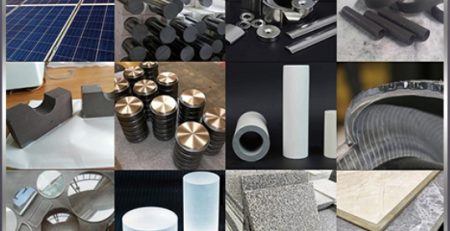Dimensional change of photovoltaic silicon wafers
The size of photovoltaic silicon wafers is derived from semiconductor silicon wafers. In terms of development , photovoltaics lag behind semiconductors by 1 to 2 generations. Over the years, the size of semiconductor silicon wafers has continued to increase, and photovoltaic silicon wafers have also experienced a process from small to large.
Driven by the dilution of cost and the improvement of module quality, in the 40 years since 1981, the size of photovoltaic silicon wafers has grown from 100mm to 210mm, and the specifications have doubled.

- 1981-2012: 100mm-156mm
Between 1981 and 2012, silicon wafers had margins of 100mm and 125mm, and were dominated by 125mm silicon wafers. After that, the margin of silicon wafers was greatly increased from 125mm to 156mm (ie M0), an increase of 54.1%. 156mm silicon wafers have gradually become a popular choice for p-type monocrystalline and polycrystalline silicon wafers. Around 2014, 125mm P-type silicon wafers were basically eliminated and only used in some IBC and HIT battery modules.
- 2012-2018: M0-M2
At the end of 2013, LONGi, Zhonghuan, Jinglong, Sunshine Energy, and Comtec took the lead in unifying M1 (margin 156.75mm, diameter 205mm) and M2 (margin 156.75mm, diameter 210mm) with a standard of 156.75mm. Silicon wafer, this is a major change in the history of silicon wafer size development. In 2017, the size standard was reviewed and approved by the SEMI standards committee. The revised version of the national standard for polysilicon wafers in 2018 also determined 156.75mm as the standard side length, and suggested that future size increases should be changed in multiples of 1mm.
M2 silicon wafers quickly occupied the market. Until 2018, all mainstream monocrystalline silicon wafers in the industry adopted the M2 standard, with a market share as high as 85%.
According to statistics, M0 and M1 silicon wafers were no longer produced in 2017. In 2019, the 156.75mm size market accounted for about 61%. CPIA expects that the proportion of 156.75mm products will drop significantly in 2020. In 2022, the market will completely bid farewell to 156.75mm size silicon wafers. piece.
- 2018 to present: M2-M6
After the melee, two mainstream sizes appeared on the market: G1 square monocrystalline (158.75mm margin) and M6 (166mm margin) large silicon wafers. In 2018, Jinko took the lead in launching the G1 silicon wafer, but when the G1 silicon wafer had not yet established a firm foothold and the market share was only 10%, LONGi launched the M6 silicon wafer in June 2019, and at this time Jinko continued to follow up. Start 163mm. During this period, Hanwha launched M4 (margin 161.7mm) products in 2019, with a 5.7% increase in area compared to M2, and a small amount of them existed in the market. The products were mainly N-type double-sided modules.
4, the ultimate silicon wafer size: 210mm
In August 2019, Zhonghuan launched the G12 (margin 210mm) large silicon wafer, which greatly increased the area of the M6 silicon wafer by 60.8%, pushed the silicon wafer size to the extreme, and achieved three negations: negation of existing products, negation Existing technology, denying the existing self. According to the data of Zhonghuan Co., Ltd., the cost of G12 cells is 25.56% lower than that of M2, and the cost of components is reduced by 16.8%. Compared with 166mm, the BOS cost is reduced by 12% in the construction of the power station, and the corresponding LCOE is reduced by 4.1%.
However, the fierce debate about 166 and 210 in the industry has never stopped. The biggest “tangle point” is the production line transformation accompanying the arrival of 210 silicon wafers. Enterprises need to consider whether the 210 has achieved efficiency gains, after the cost of transformation being paid. At the same time, the emergence of new cutting technology has also made the market debate about whether to use the new endless diamond wire cutting process to replace the traditional diamond wire for silicon ingot cropping. But what needs to be known is that with the large-scale trend of silicon wafers, the transformation of production lines is only a matter of time.




